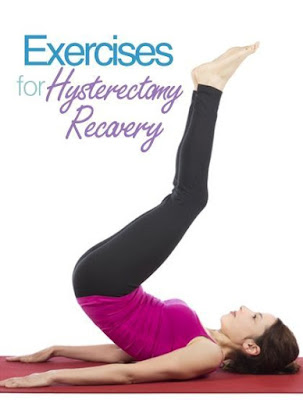Hysterectomy is a surgical procedure
involving the removal of a woman’s uterus. Hysterectomy is the second most
common surgery among women of reproductive age with about 600,000 procedures
being performed each year. The primary reason for hysterectomy include
endometriosis, pelvic pain, shifting of the uterus and cancer of the uterus, ovaries
or cervix and uterine fibroids.
There are three different degrees of hysterectomy;
total, partial and radical. Your doctor will make a recommendation based on the
patient’s medical condition and history. Recovery time will vary depending on
the type of surgery performed.
Types
of Hysterectomy:
- Abdominal Hysterectomy
- Vaginal or Laparoscopic-Assisted Vaginal Hysterectomy (LAVH)
- Laparoscopic Supracervical Hysterectomy (LSH)
As per the American College of Obstetricians
and Gynecologists, the patients undergoing this procedure should get lots of rests,
take short walks and refrain from lifting the heavy objects.
Exercising
After Undergoing a Hysterecomy:
Post-hysterectomy exercise is one of the key
factors in the healing process by promoting healthy sleep, assisting in weight
loss, relieving muscle tension and preventing a range of diseases, from various
types of cancer to diabetes and Alzheimer’s. Women who were physically fit
before undergoing this procedure are more likely to have an easier recovery and
will be able to quickly return back to their routine physical activities.
The safe routines to get you moving again
posy hysterectomy include the following:
- Walking: You can start walking on your doctor’s approval. Take short, frequent walks; this will help to speed up the healing and recovery process and will reduce the risk of blood clots.
- Breathing Exercises: It is quite common to experience difficulty breathing in the
hours and days following a hysterectomy. Take long, slow breaths,
completely filling the lungs, belly and rib cage before slowly exhaling. Targeted
breathing exercises will help you return to a normal, comfortable respiratory
pattern.
- Stretching: Gentle stretches will help relieve muscle tension and promote
healthy blood circulation. Stretch your upper back and shoulders while
lying on the bed or on the floor. Bend your knees and reach your arms up
over the head, lightly press them against the floor or the bed and then
release. Repeat this procedure. As you get stronger and more mobile, you
can add more advanced stretches to this routine.
- Pelvic Tilts: It helps to strengthen the pelvic floor. Lie on your back
with your knees bent and support your head with a pillow. Lift your bottom
up into a bridge position while contracting your stomach muscles. Keep
your middle back flush against the floor. Maintain this position for a few
seconds, release and repeat this procedure.
- Kegels: Post hysterectomy, your pelvic floor may be weakened and this
can cause loss of the bladder control, shifting of pelvic organs and other
problems. They can be performed in any position and at any time. Simply,
squeeze the muscle you would normally use to stop the flow of urine, release
and repeat. Aim for high repetitions of varying lengths.
- Head Sit-Ups: If you are not ready for full-crunches, then start with a
head sit-up. Lie on your back, bend your knees and cross your arms over
the belly. Cinch the stomach muscles with your hands, slowly raise your
head off the floor and bring your chin to your chest. After a few seconds,
release and repeat.
- Stomach “Vacuums”: This move helps strengthen the stomach muscles safely. Start
from your hands and knees, inhale and then tighten your tummy as you
slowly exhale. After a few seconds, release and repeat it.
- Lower Back Exercises: They help to strengthen the core while improving the posture
and stability, thereby aid in healing and recovery. It also helps to
alleviate and prevent the back pain post hysterectomy.
- Other Abdominal Exercises: It’s normal to experience bloating or loss of abdominal strength
after a hysterectomy. Although diet and cardio help in slimming down the
midsection, targeted core exercises helps to strengthen those muscles. Ensure
to give special attention to the transverses abdominis (TA) muscles by
performing, planks, Pilates moves, bridges and forward ball rolls.
Wrap-up:
Always check with your doctor before starting or resuming an exercise routine after undergoing a hysterectomy surgery. Walk and stretch as soon as your doctor gives
you the green signal. Do not lift anything heavier than five pounds for the
complete recovery period. Engage yourself in abdominal exercises only after the
full recovery period. Even if you feel good, do not overdo it since you can
strain the incision or cause an internal injury.
Read More:
Read More:


No comments:
Post a Comment